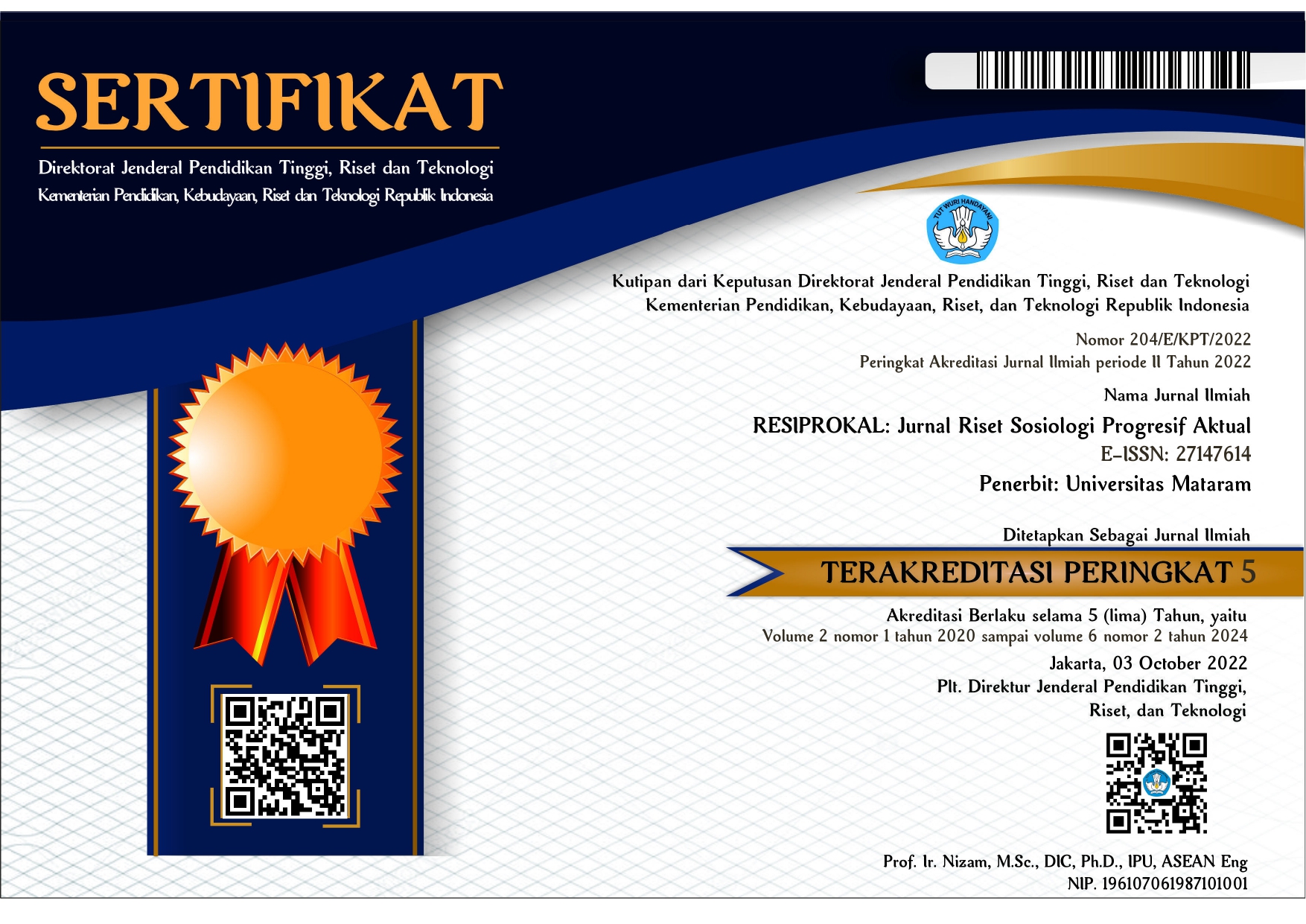Menekan Perkawinan Anak Melalui Keberpihakan Akses Perempuan di Indonesia
DOI:
https://doi.org/10.29303/resiprokal.v3i2.109Keywords:
Gender, Human Rights, Child Marriages, InequalityAbstract
Child marriage in Indonesia is the highest in the world. According to the Central Bureau of Statistics recorded 1.220.990 girls in Indonesia were married before 18. This article uses literature research to describe the impact of child marriage and policymakers' strategic steps and efforts to curb the high rate of child marriage in Indonesia. Early marriage leads to a vicious cycle of low educational attainment, domestic violence, health, maternal and child health, high maternal mortality, and poverty. As marriage ages, regulation has been changing as a strategy to reduce child marriage. Unfortunately, there is no specific regulation of the marriage dispensation, which creates a gap in the number of weddings and the regulatory aspects of strategic efforts, providing women with immediate access to education, health, and work. Ensuring fair and equitable access between men and women is carried out to the maximum extent from a gender perspective in development policies strategies in Indonesia.
Downloads
References
Kaffenberger, M., & Pritchett, L. (2020). Aiming higher: Learning profiles and gender equality in 10 low- and middle-income countries. International Journal of Educational Development. https://doi.org/10.1016/j.ijedudev.2020.102272
Kai, S. M. (2017). Mainstreaming Gender, Democratizing the State. In Mainstreaming Gender, Democratizing the State. https://doi.org/10.4324/9780203786680
Patel, V. (2011). Gender equality and human rights. Gender Equality and Human Rights in India, 1(28), 1–3. https://doi.org/10.2139/ssrn.3182315
Rahayu, W. K. (2017). Analisis Pengarusutamaan Gender dalam Kebijakan Publik (Studi Kasus di BP3AKB Provinsi Jawa Tengah). JAKPP (Jurnal Analisis Kebijakan & Pelayanan Publik).
United Nations. (2014). Women’s rights are human rights. In Black Scholar (Vol. 10, Issues 6–7). https://doi.org/10.1080/00064246.1979.11414043
Walby, S. (2005). Gender mainstreaming: Productive tensions in theory and practice. Social Politics, 12(3), 321–343. https://doi.org/10.1093/sp/jxi018
Wodon, Q., Male, C., Montenegro, C., Nguyen, H., & Onagoruwa, A. (2018). Educating girls and ending child marriage: A priority for Africa. The Cost of Not Educating Girls Notes Series.
Woetzel, J., Madgavkar, A., Ellingrud, K., Labaye, E., Devillard, S., Kutcher, E., Manyika, J., Dobbs, R., & Krishnan, M. (2015). The power of parity: How advancing women’s equality can add $ 12 trillion to global growth. In McKinsey Global Institute.
Yumarni, T., & Amaratunga, D. (2018). Gender mainstreaming and sustainable development goals: A systematic literature review in post disaster reconstruction area. MATEC Web of Conferences. https://doi.org/10.1051/matecconf/201822902016
Undang - Undang Nomor 1 Tahun 1974 tentang Perkawinan
Undang - Undang Nomor 16 Tahun 2019 tentang Perubahan Undang - Undang Nomor 1 Tahun 2017 Tentang perkawinan
Laporan Profil Anak Indonesia 2020
Laporan Profil Perempuan Indonesia 2020
Laporan Profil Kesehatan Indonesia 2018
Laporan Profil Kesehatan Dasar Indonesia 2018








